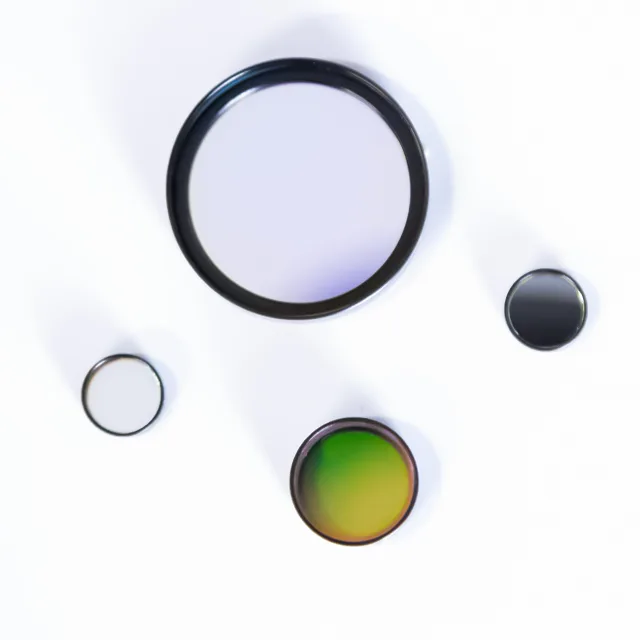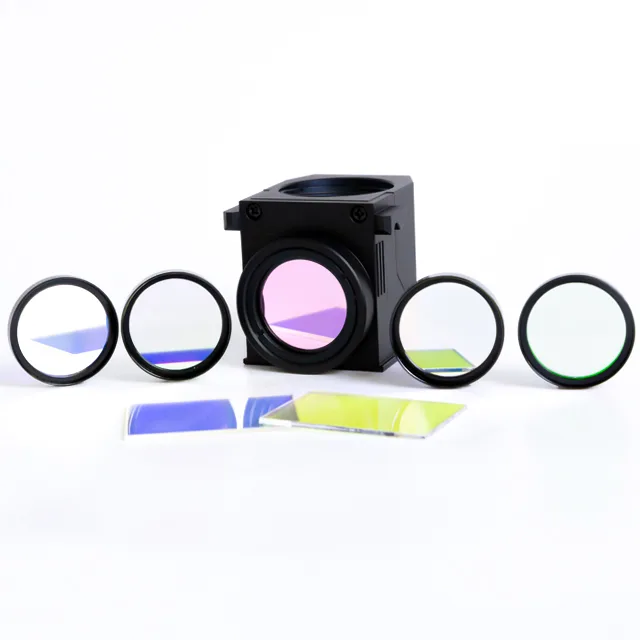Optical light bands can be applied in various fields, such as selectively moving or blocking light sources of specific wavelengths, and optical filters can be applied in medical facilities, scientific research, electronic products, environmental monitoring, etc.
This makes it possible to improve image quality, enhance color ratios, and support the movement of various precision instruments. This article will explore the role of optical filters in various application fields, let’s read together.
Optical Filter Definition

Optical filters are used to control the properties of light, allowing certain wavelengths to pass through while blocking others. They come in a variety of types, including longpass, shortpass, bandpass, and thin-film filters, each with a specific function.
For example, long-pass filters transmit longer wavelengths and block shorter wavelengths, a specific function that can be effective in isolating specific light range applications.
Optical Filters in Healthcare
In medicine, optical filters are critical to enhancing imaging technology. They are used in devices such as endoscopes and microscopes to help doctors better identify tissues and cells by improving image contrast and clarity. For example, in fluorescence microscopy, filters are central to visualizing fluorescently labeled structures, supporting disease mechanism research and diagnosis.
In addition, they regulate wavelength and energy in laser therapy to ensure that the laser acts precisely on the target tissue while protecting surrounding healthy tissue, improving treatment safety and effectiveness. These applications highlight the importance of optical filters in improving the quality of medical imaging and treatment.
Optical Filters in Telecommunications
In telecommunications, bandpass filters can isolate specific wavelengths in fiber optic systems. This isolation is key to transmitting data over long distances without interference, ensuring high-quality communication channels essential to modern telecommunications networks.
This selective filtering helps maintain the integrity and efficiency of data transmission in the vast networks that power the world’s internet, telephone, and multimedia services.
Optical Filters in Scientific Research
Optical filters are used in scientific research, especially in the field of spectroscopy. They enable researchers to deeply analyze the characteristics of various light sources by isolating specific wavelengths of light, thereby promoting the understanding and study of material composition and chemical reactions.
In laboratory research, optical filters are also an important part of analytical instruments, used to accurately control the light environment under experimental conditions. They ensure the accuracy and reliability of experimental data by controlling the specific wavelength of the light source in fields such as photochemical reaction research, biomarker observation, and environmental monitoring.
The application of these filters not only improves the accuracy of scientific research but also broadens the possibilities of research, allowing scientists to explore scientific problems that were previously difficult to observe or analyze.
How Do Optical Filters Improve Photography and Imaging?

In photography, optical filters adjust the light entering the lens, improving image quality by controlling exposure, and color balance, and reducing glare. Here are some optical filters that are often used in photography:
- Polarizing filter: This filter can reduce or eliminate reflections from non-metallic surfaces such as water or glass, while enhancing the contrast of the blue sky and the white clouds, making landscape photos clearer and more vivid. Polarizing filters are an indispensable tool for outdoor photographers.
- Neutral density filter (ND filter): ND filters reduce the amount of light entering the lens without changing the color characteristics of the light, allowing photographers to use wider apertures or longer exposure times, thereby capturing the dynamic effects of flowing water or clouds when the light is strong, or creating a shallow depth of field in portrait photography.
- Ultraviolet (UV) filter: Mainly used to block ultraviolet rays, reducing the blur and blue tint they can cause in photographic works. Although the sensors of modern digital cameras are less sensitive to UV light, using UV filters in outdoor photography can still provide additional lens protection.
- Color filters: In black and white photography, color filters are used to control the grayscale representation of different colors in black and white images. For example, a red filter can enhance the contrast of the sky and make clouds stand out more.
By using these filters properly, photographers can control exposure, enhance color contrast and saturation, and create unique visual effects, thereby enhancing the artistic expression and technical quality of the final image.
Applications of Optical Filters in Astronomy
In astronomy, by using different types of optical filters, astronomers can effectively isolate specific wavelengths from distant celestial bodies. For example, by using a hydrogen alpha filter, it is possible to capture the emission lines of hydrogen atoms from distant stars and nebulae, a wavelength of light that is usually obscured by other wavelengths of light in the visible spectrum. This allows astronomers to observe star-forming regions and other ionized gas clouds, providing important information about the distribution of interstellar matter and the life cycle of stars.
In addition, filters are used when studying planetary atmospheres. Using specific filters can help scientists identify and analyze the chemical components of planetary atmospheres, such as methane, water vapor, and carbon dioxide. This method is widely used in the observation of exoplanets, helping astronomers explore the atmospheric conditions and potential conditions for life habitability of these planets.
Can Optical Filters Enhance Industrial Processes?
The use of optical filters in industrial processes can improve product quality and production efficiency. In terms of quality control, these filters are widely used in machine vision systems to help detect defects or non-standard areas of products by accurately screening and analyzing optical data from the production line. For example, in the automotive manufacturing industry, optical filters are used to check the paint quality of vehicles to ensure color consistency and surface finish of each vehicle, thus avoiding costly late corrections.
In addition, optical filters also play a role in other manufacturing links, such as the inspection of electronic components, ensuring that the position and soldering quality of all circuit board components meet strict standards. This application not only improves the degree of automation in the manufacturing process but also greatly increases production efficiency and product consistency.
What Role do Optical Filters Play in LiDAR Laser Sensors?
In LiDAR sensors, optical filters can enhance the radar sensor’s ability to detect and accurately measure distances. By filtering out unnecessary light, including ambient light interference, optical filters ensure that the radar system receives a clearer signal, allowing for more accurate imaging and data collection.
In addition, these filters help improve the overall performance of LiDAR systems used in a variety of applications, such as autonomous vehicles, where accurate and reliable data is essential for safe navigation. By using optical filters, LiDAR sensors can operate more effectively in different lighting conditions, thereby improving their usefulness in real-world environments where lighting conditions can vary greatly.
Application of Optical Filters in Environmental Monitoring
Optical filters have greatly promoted the advancement of air and water quality monitoring technology in the field of environmental monitoring. In air quality monitoring, filters can help analytical equipment distinguish and measure the spectral characteristics of specific pollutants, such as determining the type and concentration of pollutants by detecting absorption lines or emission lines of specific chemicals in the atmosphere.
For water quality monitoring, they are used to identify harmful chemicals and biological pollutants in water bodies, such as heavy metals and organic pollutants. Through accurate analysis of the spectrum of water samples, environmental scientists can quickly assess the health of water bodies, thereby quickly responding to potential environmental risks and ensuring the safety of drinking water and natural water bodies.
How Do Optical Filters Work in Consumer Electronics?
In consumer electronics, optical filters improve the performance of devices such as cameras and displays. Smartphone manufacturers integrate these filters into camera modules to improve photo quality in various lighting conditions. Similarly, filters in displays help reduce eye strain by blocking UV rays and reducing blue light exposure.
Find Professional Help
Optolong Filters offers a range of optical filters for a variety of applications, including biomedical imaging, industrial inspection, life science instruments, and machine vision.
Optolong Filters showcases customizable filter options to meet specific needs, with advanced coatings and precision manufacturing to improve performance. And provide detailed product descriptions, applications, and technical support, contact us to help you choose the optical filter that best suits your needs.
Related reading: What is a notch filter?
